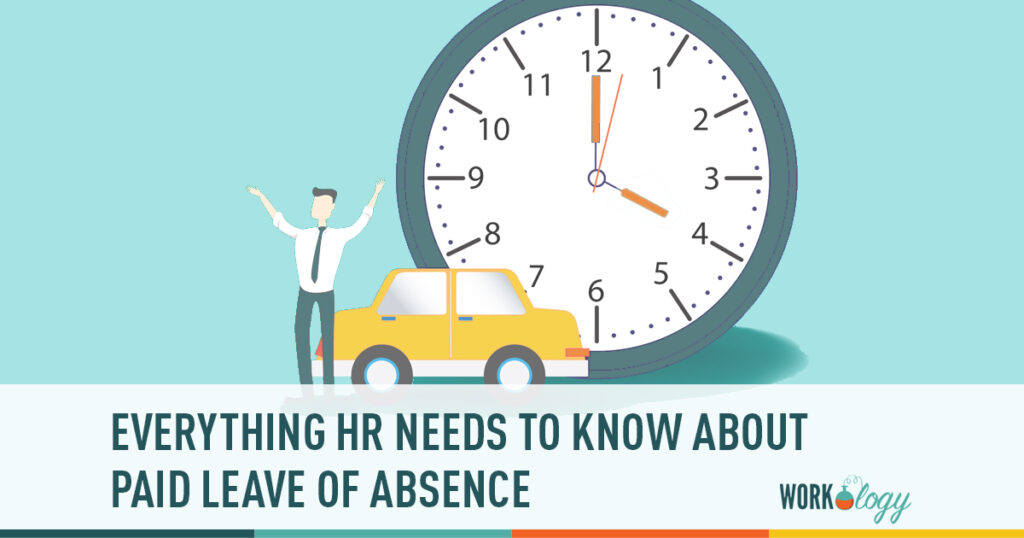Sometimes, an employee will need to take an extended leave of absence from work to take care of an often abrupt and usually important or significant situation in their lives. This can often be an incredibly stressful event that can make employees nervous about their job security or financial status. Because of this, it’s crucial that your company has a secure leave of absence policy so that your employees know if the unexpected happens, they’re taken care of.
If you want to learn more about the different types of paid and unpaid time off, you can check out this post: 12 Types of Paid and Unpaid Leave and Time Off | Workology
What is a leave of absence?
A leave of absence is when an employee takes extended time off from work but still maintains their status as an employee. This is often different than paid time off (PTO), but can sometimes be the same pool of time used for time off covered by the Family and Medical Leave Act (FMLA), such as illness, bereavement, or parental leave. Some companies will specifically have a separate policy to be used for situations that don’t already fall under disability insurance.
Sometimes, companies will let employees accrue time for leaves of absence. Other companies will have a preset amount that employees can use when they need it. For example, I once worked for a company that provided a paid leave of absence policy of up to 12 weeks before employees were required to take time off according to FMLA.
Should leaves of absence be paid?
Leaves of absence can be paid or unpaid, but there are many benefits to offering paid leaves of absence. This increases trust between employees and employers and helps reduce stress among employees who may be facing tough situations. When an employee is already dealing with a stressful and unexpected situation, the last thing they want to worry about is their job security or finances.
Examples of Companies with Paid Leaves of Absence
Most companies offer separate pools of leave time for different situations. Netflix, for example, offers 52 weeks of paid paternal leave and an unlimited vacation time policy.
Sample Paid Leave of Absence Policy
All full-time employees who have worked at least 90 days are allowed to take a paid leave of absence lasting 50 weeks or less. Employee benefits and salary will be continued as if the employee was actively working throughout the leave.
If an employee needs to extend their leave beyond 50 weeks, the time taken will be unpaid.
Employees must request a leave of absence with prior notice of at least one week, including the purpose of the leave and the length of time.









One Comment
Thank you for the very helpful post! Will look forward to your other articles.
Comments are closed.